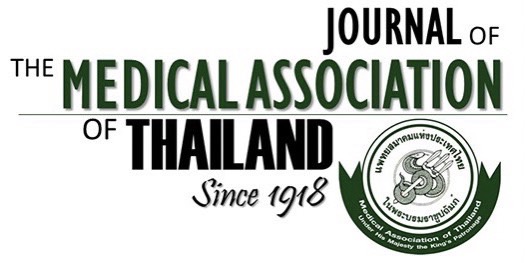Inhaled Nitric Oxide in Newborns with Severe Hypoxic Respiratory Failure
Uraiwan Chotigeat MD*, Meera Khorana MD*, Wiboon Kanjanapattanakul MD*
Affiliation : * Neonatal Unit, Department of Pediatrics, Queen Sirikit National Institute of Child Health
Background : Respiratory failure in term and near term infants is often associated with persistent pulmonary
hypertension of the newborn and contributes to hypoxemia in these infants. Inhaled nitric oxide (iNO) is
currently used as a pulmonary vasodilator to improve oxygenation in neonates with severe respiratory failure.
Objective : To determine outcome of administration of iNO in severe hypoxic respiratory failure.
Materials and Methods : The present study was conducted from 1999 to 2004 in the neonatal intensive care unit
(NICU) at Queen Sirikit National Institute of Child Health. Patients were selected from all infants > 34weeks
gestational age who required high frequency oscillatory ventilation(SLE 2000 HFO,SLE,UK) or conven-
tional mechanical ventilation for hypoxemic respiratory failure caused by PPHN. Diagnosis was confirmed by
2-D echocardiogram visualization with right to left shunt through the foramen ovale or patent ductus arterio-
sus. Inhaled nitric oxide was given as standard therapy in patients who had two oxygenation indices > 20 at
least 30 minutes apart after being on a mechanical ventilator.
Results : Fifty-five cases were enrolled and male to female ratio was 22.2 to1. The survival rate was 76.4
percent. Inhaled nitric oxide significantly improved oxygenation index, arterial alveolar oxygen tension ratio
(a/A O2), and alveolar arterial oxygen gradient in survivors at one hour after treatment. The earliest improve-
ment in oxygen saturation was within ten minutes. Meconium aspiration syndrome was the most common
underlying cause of PPHN. No acute complication was found during nitric oxide administration. Chronic
lung diseases, delayed development and severe hearing loss in long-term follow up were found in 10, 5, and 2
cases, respectively.
Conclusion : Inhaled nitric oxide should be used early in severe hypoxic respiratory failure with persistent
pulmonary hypertension of newborn and can improve survival rates without any major immediate side effects.
Keywords : Nitric oxide, Persistent pulmonary hypertension, Newborn, High frequency oscillatory ventilation



